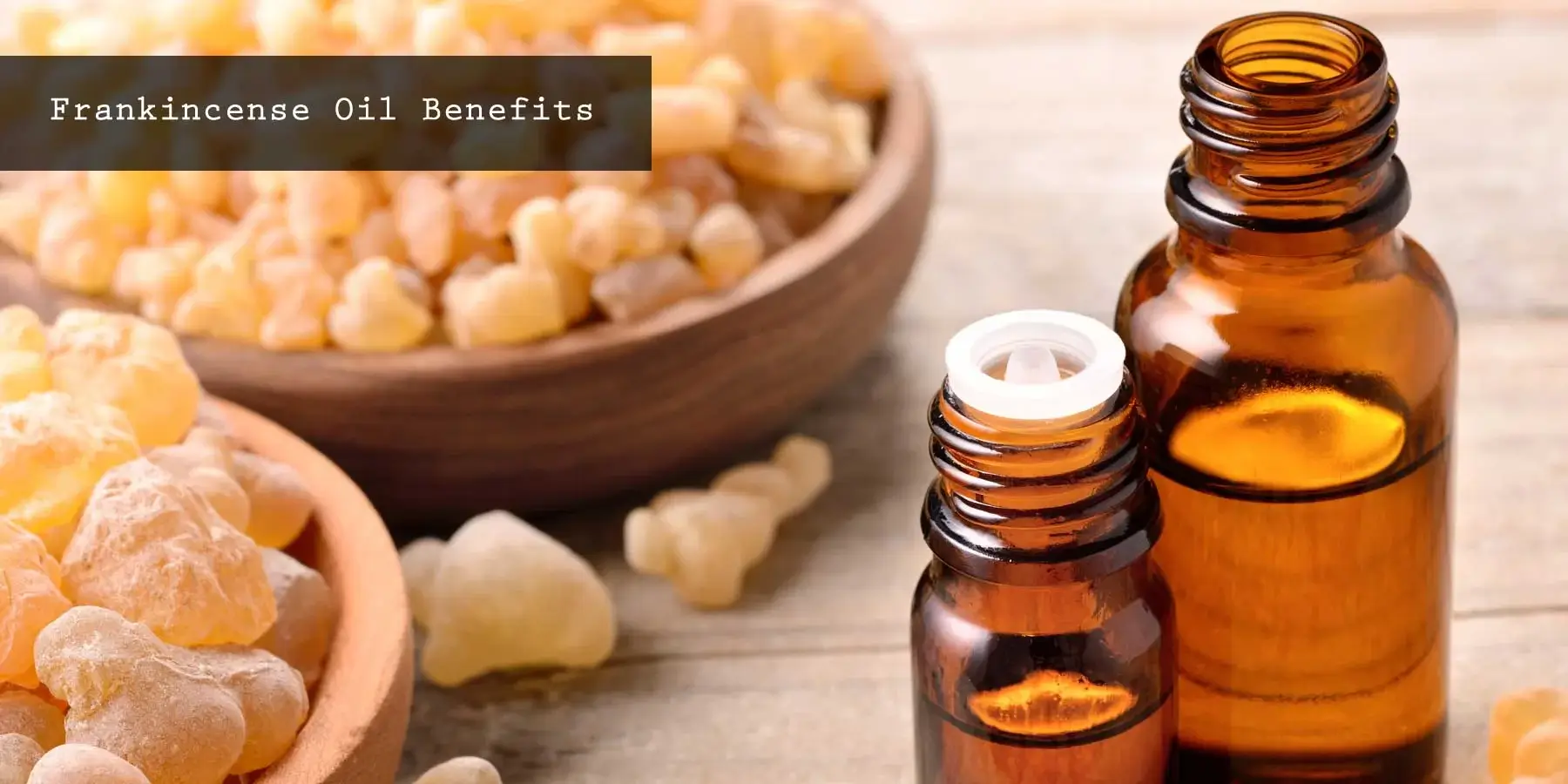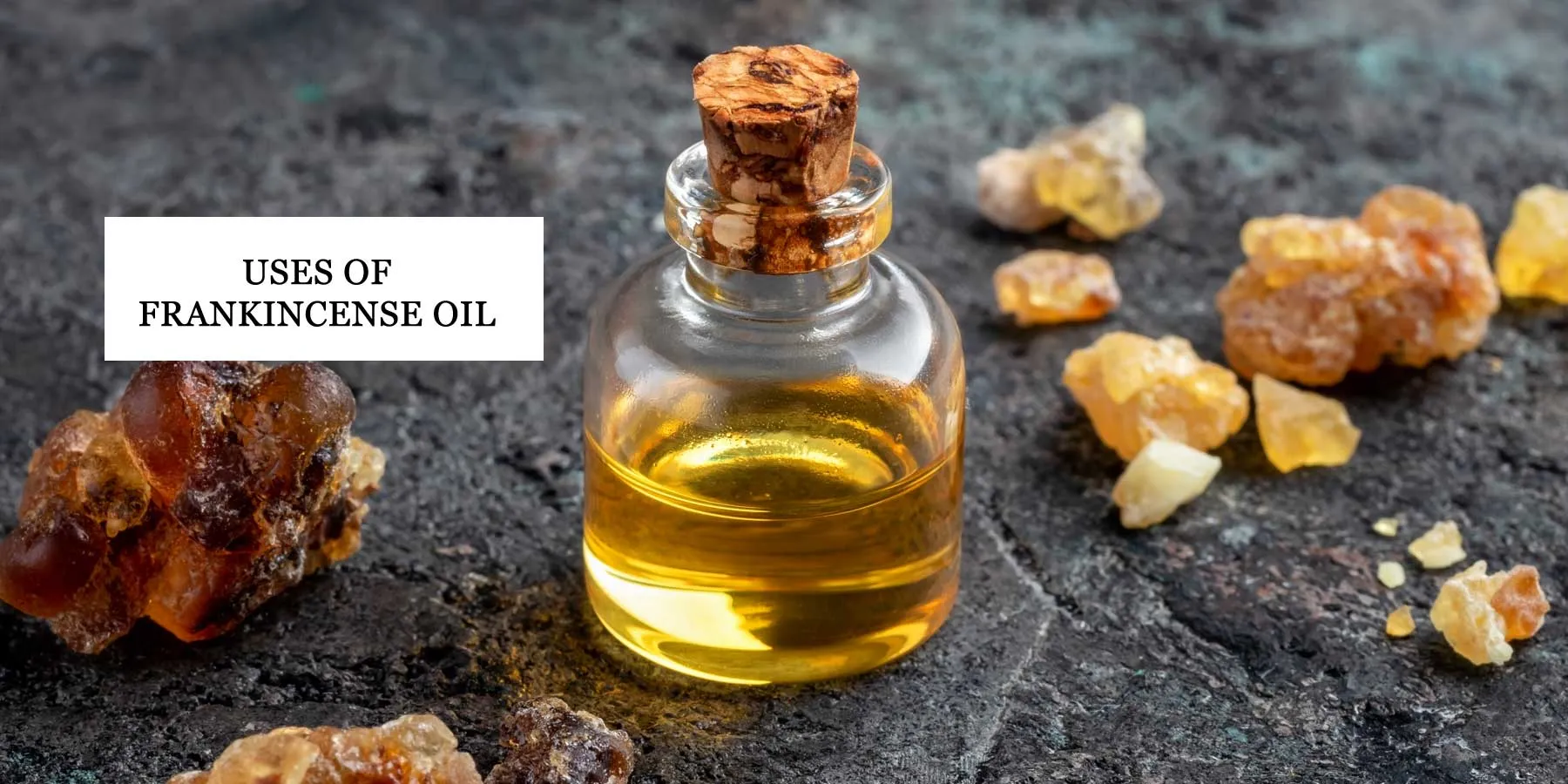Frankincense Essential Oil Benefits and Uses

First, what is Frankincense Oil?
Frankincense, also called olibanum, is derived from two types of Boswellia trees: Boswellia sacra and Boswellia carteri. The process starts with extracting the milky white sap from the tree bark and hardened into a gum resin in around 10 days, and scraped off as tear-shaped droplets.The resulting oil is pale yellow-green and has a woody, earthy and spicy aroma.
Boswellia trees grow in African and Arabian regions, including Yemen, Oman, Somalia and Ethiopia. In particular, Oman is well-known for producing and trading frankincense to India, China and other countries in the Mediterranean for thousands of years. Live Science highlights that Oman is considered the most ancient source of frankincense.
Frankincense trees can produce different colored resins. Brown-yellow and muddy frankincense is touted as the cheapest and most readily accessible, while silver and clear frankincense is considered high-quality. If you’re in Oman, the latter is usually reserved for the sultan and rarely shipped out of the country – it’ s hard to acquire if you live in Western parts of the world.
Uses of Frankincense Oil

Frankincense oil has long been revered in the Middle East, where it's been used as an anointing oil and a perfume. It was often burned as incense in religious ceremonies conducted by the Greeks, Romans, Egyptians and Israelites too.
Egyptian women also relied on frankincense as a fashion statement by burning and grinding it into a powder to make heavy kohl, a type of eyeliner. The oil is added in cosmetic and skincare products like lotions, perfumes, liquid soaps and shower gels, which may help:
- Soothes and relieves dry skin
- Fights the appearance of stretch marks, age spots and wrinkles
- Speeds up the healing of cuts, acne, burns, rashes and sores
- Strengthens hair roots
It assists with promoting feelings of peace, comfort and relaxation, as well as combatting anxiety and stress.Frankincense oil may assist with healthy cell regeneration, and maintain optimal cell and tissue health, too.
Frankincense oil is home to esters, sesquiterpenes, diterpenes and monoterpenes like alpha- and beta-pinene, sabinene and d-limonene. It also contains actanol, bornyl acetate, linalool, octyl acetate, incensole and incensyl acetate. The monoterpenes and sesquiterpenes are the most valuable elements of frankincense oil. According to the "Reference Guide for Essential Oils," monoterpenes help eliminate toxins from the liver and kidneys, and possess a stimulating and soothing effect. Some monoterpenes are capable of delivering antiseptic, antibacterial, antiviral, anti tumor and expectorant properties.
Sesquiterpenes may cross the blood-brain barrier, as seen in this 2013 animal study, and help stimulate the limbic system of your brain — usually around the pineal and pituitary glands — by raising the amount of oxygen in it, and promoting secretions of antibodies, endorphins and neurotransmitters.
Benefits of Frankincense Oil
The health benefits of frankincense oil are mostly attributed to its following properties:
- Disinfectant
- Anti-inflammatory
- Astringent
- Antiseptic
- Digestive
- Diuretic
- Tonic
- Expectorant
- Cytophylactic
- Cicatrisant
- Carminative
- Emmenagogue
- Uterine
- Vulnerary
It also aids with nutrient absorption and strengthens your immune system, especially if you’re immunocompromised. Frankincense oil w as found to be useful for certain health conditions, such as:
• Arthritis or rheumatoid arthritis (RA) — Researchers from Cardiff University found that a rare type of frankincense can aid in inhibiting production of inflammatory molecules, and reducing the risk for cartilage tissue breakdown that are precursors to these debilitating conditions.
Indian frankincense or boswellin, another member of the Boswellia family, has been found to significantly reduce inflammation in animal studies. It is actually one of my personal favorites, as I have seen it work well as a natural painkiller for many of my former RA patients.
• Colds and respiratory disorders — Frankincense oil can help separate phlegm deposits in your lungs, and may alleviate breathing difficulties among people with asthma, influenza, bronchitis, sinusitis and catarrh.
• Oral health problems — Dental problems such as bad breath, cavities, toothaches, mouth sores and other infections can be alleviated through frankincense oil’s antiseptic properties. One study indicates that frankincense extracts helped manage inflammation caused by plaque-induced gingivitis.
• Digestive disorders — One study has found that boswellic acids may help with digestive inflammatory diseases such as chronic colitis and ulcerative colitis.
• Uterine health — This oil may help control estrogen production, regulate premenopausal women’s menstrual cycles, and assist in lowering uterine cancer risk by helping inhibit the development of post-menopause tumors or cysts in the uterus.
Lastly, frankincense oil is linked to cancer-fighting abilities. Researchers are looking into a component in the oil that may help inhibit cancer proliferation in the body.
How Frankincense Oil is Made
Frankincense oil is made through steam distillation of a resin derived from the frankincense tree.When buying frankincense oil, only choose 100 percent pure essential oil of the highest quality.
Do not confuse frankincense essential oil with any type of fragrance oil. Essential oils come from plants, while fragrance oils are usually artificially made, and often contain synthetic allergenic substances that may be toxic for you. Although fragrance oils are typically less expensive, these may not be able to provide you with the health benefits you desire.
How Does Frankincense Oil Work?
The effects and benefits of frankincense oil can be acquired by applying it topically. Just make sure to blend frankincense oil first with other carrier oils such as jojoba, coconut, olive or sweet almond oil. Applying this oil may help alleviate joint or muscle pain, promote hair root health, and stimulate healing of cuts, acne, insect bites or boils.
Adding a few drops of frankincense oil into a diffuser or vaporizer may help ease colds and other respiratory problems, and promote calmness and better breathing. People can also reap these benefits by adding frankincense oil to bathwater.
Biggest Take-Away
- Frankincense oil promotes healthy cell regeneration and keeps existing cells and tissues healthy
- It’s useful for skin health, and can help treat dry skin, reverse signs of aging and reduce the appearance of stretch marks and scars
- Sources and References
- Live Science, December 24, 2012
- Slate, December 24, 2010
- “The Healing Art of Essential Oils: A Guide to 50 Oils for Remedy, Ritual, and Everyday Use,” January 8, 2017
- “Aromatherapy Easy Guide for Beginners,” February 24, 2015
Benefits and Uses of Frankincense Oil.
Biggest Take-Away
- Frankincense oil promotes healthy cell regeneration and keeps existing cells and tissues healthy
- It’s useful for skin health, and can help treat dry skin, reverse signs of aging and reduce the appearance of stretch marks and scars
RELATED POSTS